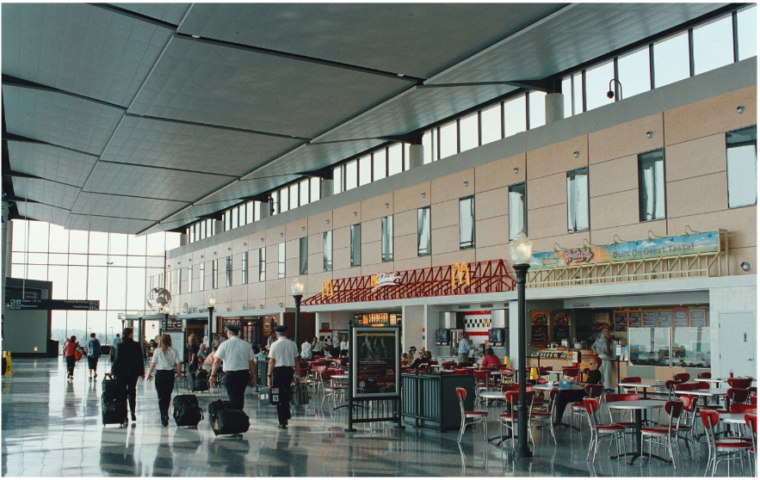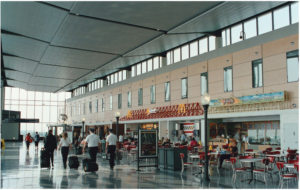
Airport operations throughout the U.S. have been chaotic in the past several years. Turbulent weather has created havoc along with other operational issues such as staff shortages and new federal mandates. Now, airports have also encountered frightening cyberattacks and upgraded technology has become a high priority. America’s rankings when compared to other top international airports has continued to fall. Efforts are underway now to change all this.
Recent cyberbreaches at more than a dozen U.S. airports were designed to place a stranglehold on public access to flight data. None were targeted at air traffic control systems. ABC News reported that the Russian Federation was responsible for the attacks which resulted in shutting down public access to data related to airport wait times, travel information, and gate data.
Airport officials are addressing all issues, but air travel has become more stressful for all parties. According to the U.S. Bureau of Transportation Statistics, since June 2022, customer complaints about airline operations have escalated by 270 percent – considerably higher than pre-pandemic monthly averages.
Airport infrastructure is overdue for modernization and Congress has redoubled efforts to provide funding for the much-needed upgrades. Recent grants from the Federal Aviation Administration (FAA) were allocated to airports planning to rebuild and upgrade existing infrastructure in the near term. This specific funding is focused on projects to modernize existing airport facilities and concourses rather than on airport initiatives that will take years–or decades–to complete.
Airport officials can also apply for funding from the Bipartisan Infrastructure Bill’s $5 billion program for airport terminal improvements. That funding will support projects to relocate terminals, replace aging facilities, increase capacity, improve energy efficiency, and expand accessibility. Additionally, there is investment revenue available to support projects that reconstruct, repair, or improve air traffic control towers. Another $20 billion is available for technology upgrade projects and safety improvements. A lack of funding is not a problem currently.
Houston’s Airport System will launch a surge of projects following the strain it encountered recently as labor shortages caused numerous flight cancellations. Reduced airline flight schedules, primarily a result of staff shortages, forced more passengers into fewer planes. And there were numerous disincentives to find other travel options. That created economic damage and significantly reduced the $36 billion in annual economic activity that the region had anticipated.
Now, a $21.8 million technology design project has been announced by the Houston Airport System. The city’s capital improvement plan calls for the project to launch in 2023. The first phase of a plan for technology modernization will call for professional services to assist with a plan for budgeting, prioritizing, and implementing new technologies.
Houston’s capital improvement budget also allocates more than $10 million for expansion of the George Bush Intercontinental Airport’s effort to provide a curb-to-gate passenger processing system for Hobby Airport. The project will be designed to ensure passenger convenience and security. It will also align with recent U.S. Customs and Border Protection mandates for international airports to adopt biometric scanning within the next several years.
The Watertown International Airport in Jefferson County, New York is preparing to launch a $28 million effort to expand the airport so that demand on transportation infrastructure is distributed more evenly across the state. The $230 million project will deliver significant improvements to the airport including a larger, reconstructed version of its existing passenger terminal and new commercial space to accommodate non-traveling guests. Additional features will include an expanded Transportation Security Administration (TSA) screening area, a new visual paging system, wayfinding signage, and a jet bridge that links directly to the reconstructed terminal from planes.
The Albany International Airport in New York received $60 million in state funding to expand the airport’s existing terminal. The expansion project will include pre- and post-security checkpoints, amenities, and other operational upgrades to improve efficiency. Additional project components will include improved facility heating, a new HVAC system, and an outdoor greenspace.
Officials at the Bradley International Airport in Connecticut received a $20 million federal grant which will be used to support a $230 million terminal upgrade project. The plan is to expand an existing terminal, provide a new in-line baggage check system, and an upgraded baggage handling system which will be designed to relieve congestion. The project will also address Americans with Disabilities Act (ADA) compliance mandates, install new elevators, provide an upgraded HVAC system, and make other airport improvements.
At the Tulsa International Airport in Oklahoma, a $40 million project will replace the current 61-year-old control tower with a completely new structure. The project will include upgrading the radar control system to maintain and enhance safety for arriving and departing planes. The replacement tower will be 98 feet taller than the current structure and will increase visibility for controllers.
Another air traffic control tower replacement project will launch soon in Peoria, Illinois. The project’s total cost has not been projected but construction alone is anticipated to be approximately $17 million. Numerous enhancements will be included as well. A $15 million grant award from the FAA will help fund the replacement of this 60-year-old structure. Additional components of the project include technology modernization, a new HVAC system, lighting enhancements, and more.
Activity at U.S. airports will be noticeable over the next several years. Much of the new funding has been authorized for the next five years.

